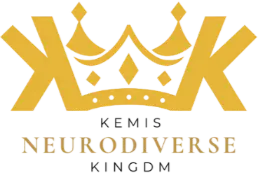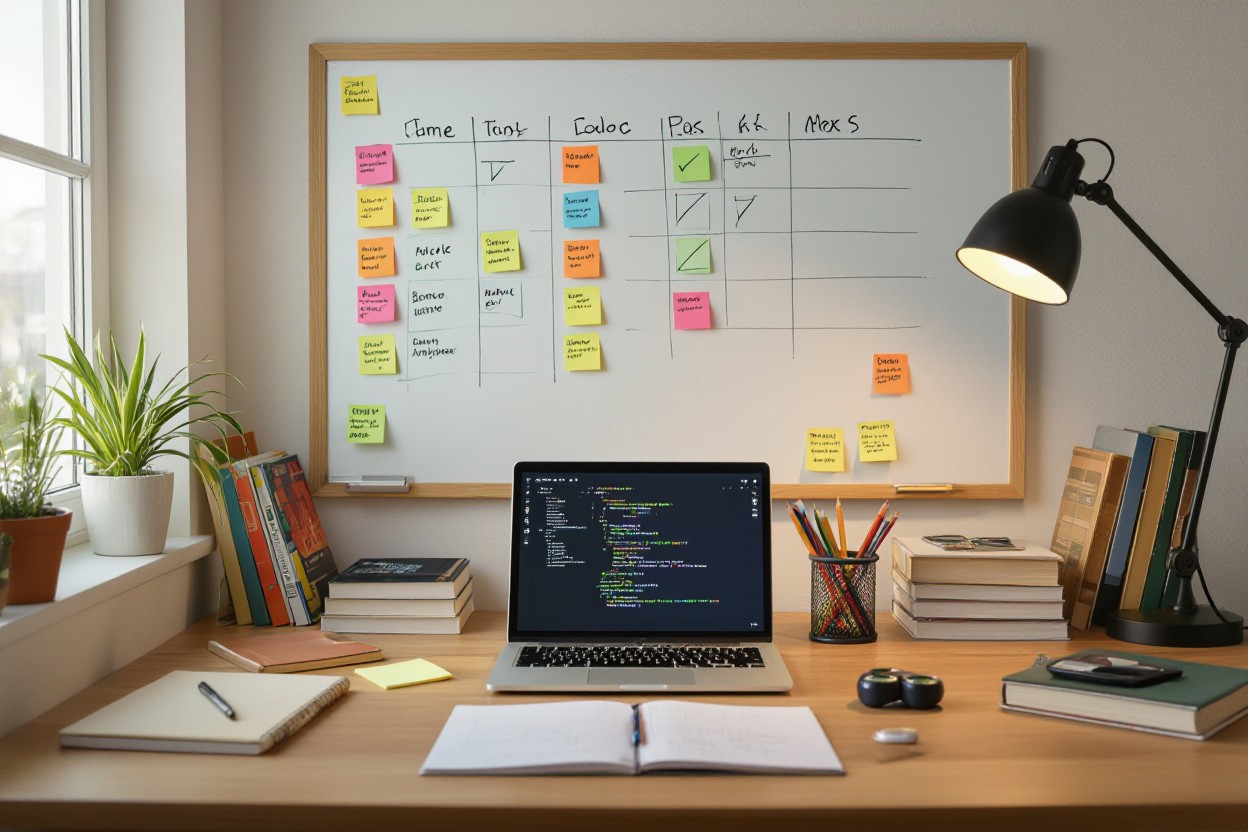Practical ADHD Help For Adults – Strategies That Actually Make A Difference
It’s adult life—work, relationships and bills—that often magnifies ADHD, leaving you at risk of missed deadlines, mounting bills and strained relationships. You need a tailored approach that blends time-management, focus strategies and lifestyle changes; practical supports like Kemi’s resources, one-on-one ADHD coaching and family/parent support make a real difference, and with consistent tactics you can harness strengths and thrive.
Key Takeaways:
- Adult ADHD needs tailored strategies because work, relationships and bills amplify symptoms; explore tailored resources at https://kemisneurodiversekingsdm.com/.
- Use external systems (planners, apps), break tasks into small steps and try time-blocking or the Pomodoro method to improve time management and organisation.
- Create distraction-free zones, use noise-cancelling headphones or body-doubling to boost focus, and consider targeted coaching such as one-on-one ADHD coaching to build sustainable routines.
- Manage emotions with mindfulness, grounding techniques and therapy; family or parent support can reinforce progress—see family/parent support.
- Lean on strengths—creativity, quick thinking and adaptability—use habit stacking, visual cues and simple systems to make daily habits stick and harness hyperfocus strategically.
Navigating Adult Life with ADHD: The Unique Challenges
The Impact of Undiagnosed ADHD in Adulthood
Around 2.5% of adults are estimated to have ADHD, and a large proportion are not identified until adulthood; you may only notice patterns of chronic lateness, missed deadlines or relationship friction in your 30s or 40s. Untreated or undiagnosed ADHD often produces a cumulative burden: recurring missed payments, repeated job changes, and escalating stress can quietly erode savings and self‑confidence before a diagnosis arrives.
You might have been labelled “lazy” or “disorganised” for years and learned to mask symptoms, which increases emotional strain and heightens rejection sensitivity (RSD). Accessing a formal assessment and targeted supports—whether via clinical routes or tailored services like the resources at https://kemisneurodiversekingsdm.com/ and one‑to‑one coaching at https://kemisneurodiversekingsdm.com/adhd-coaching/one-on-one-adhd-coaching/—can stop that downward drift and let you adopt strategies that play to your strengths.
Daily Demands: Work, Relationships, and Self-Care
At work you may oscillate between hyperfocus on interest‑driven projects and complete avoidance of low‑interest but crucial tasks; practical steps that help include breaking projects into 5–15 minute steps, using time‑blocking or a Pomodoro rhythm (25/5), and setting digital reminders or calendar buffers. Creating a distraction‑free zone, experimenting with body‑doubling, or using noise‑cancelling headphones for focused sprints can cut task completion time and reduce error rates.
Within relationships your emotional reactivity and missed cues can be misread by partners; scheduling weekly check‑ins, sharing a joint calendar, and using simple visual cues (shared whiteboards or task lists) reduce misunderstandings. For self‑care, anchor exercise, sleep and meal routines to existing habits—habit stacking—so you build reliable scaffolding that stabilises energy and concentration; consider family or partner support resources like https://kemisneurodiversekingsdm.com/adhd-coaching/family-parent-support/ if dynamics are strained.
Practical adjustments you can apply today include setting alarms for transition points, batching similar tasks to exploit momentum, and keeping task systems deliberately minimal so you sustain them long term; leverage hyperfocus by scheduling high‑priority work during your peak energy hours and reward completion with short, tangible breaks to capture dopamine boosts that reinforce consistency.
Time Management Mastery: Tailored Techniques for Busy Adults
External Tools: Planners, Apps, and Visual Systems
Use a single trusted system for scheduling and tasks to avoid fragmentation: a synced digital calendar (Google Calendar) for time-blocking, a task app like Todoist or Trello for project breakdowns, and a simple paper planner for daily prioritisation. Set calendar events with start and end times plus a 10–15 minute buffer so transitions don’t collapse; use colour-coding for work, family and self-care so your brain recognises context at a glance. Apps such as Forest or Focus@Will can pair with Pomodoro timers (standard 25/5 cycles) to protect focus during scheduled blocks.
Visual systems speed decision-making: a three-column Kanban (To Do / In Progress / Done) on a whiteboard or Trello keeps momentum visible and gives you frequent dopamine hits for small completions. Try time-tracking with Toggl for one week to see where energy drains occur, then adjust blocks accordingly.
The Power of Breaking Tasks into Manageable Steps
Divide big goals into bite-sized, time-estimated steps so you can schedule them into your calendar and actually finish them: for example, break “prepare year-end accounts” into five steps—gather receipts (30 minutes), scan and name files (45), enter expenses (2 × 25-minute Pomodoro), reconcile (30), review with accountant (15). Underestimating task size is a common trap that leads to missed deadlines and overwhelm; assigning minutes to each micro-task makes it measurable and reduces activation energy.
Use a starter action to beat inertia: decide on a single tiny first step (open the document, write one heading, or set a timer for 10 minutes) and apply the two-minute rule for trivial items—if it takes under two minutes, do it now. Create a checklist with estimated times beside each item and slot those steps into calendar blocks with 15-minute buffers; tracking these quick wins builds momentum and gives you repeated small dopamine boosts that sustain progress.
Cultivating Focus: Strategies to Minimise Distractions
Dedicate a clearly defined workspace that signals to your brain when it’s time to work: keep that area for focused tasks only and limit it to one visible priority at a time. Use the 25/5 Pomodoro or 50/10 intervals depending on how long you can sustain attention; many people with ADHD report doubling productive minutes by experimenting with different interval lengths. Turn phone notifications off or set them to priority-only so you reduce interruptions; silencing alerts and using a visible timer can cut task-switching and the mental load of reorienting to work.
Use external scaffolds to carry attention across days: a simple whiteboard with a single daily top-three list, a digital reminder that pings at the same time each day, or a physical tray labelled “action” for all incoming papers. If your tasks shift between creative and administrative work, block deep-focus periods for high-interest tasks to leverage hyperfocus and schedule low-energy admin in short, timed batches—this creates predictable routines that protect high-value focus windows.
Designing Your Environment for Success
Remove visual clutter from your immediate line of sight: keep only the tools you need for the current task on your desk and store everything else in labelled containers. Use a desktop whiteboard or a single A4 checklist that you update each morning; studies and practitioner reports suggest that reducing visible choices to one or two options lowers procrastination. Consider layout tweaks that matter: face a wall or a window with a neutral view, place frequently used items within arm’s reach, and put incoming-mail or to-do piles out of sight until their scheduled review time.
Sensory adjustments can change performance dramatically—try noise-cancelling headphones or background soundtracks set to 60–70 dB to mask distracting noises, or cooler light (around 4000–5000K) for alertness during daytime work. If you share space, use a small sign or a pair of headphones as a boundary cue that signals focus time to others.
Techniques to Enhance Concentration: Body Doubling and More
Body doubling is simple: work alongside someone—either in person or virtually—to increase accountability and reduce initiation barriers. You can schedule 30–90 minute co-working sessions with a colleague, friend, or an ADHD coach; many people report task-start rates rising after just a few sessions. Combine body doubling with a visible countdown timer and a short pre-session plan (two bullet points of what you’ll complete) so you begin each session with clarity rather than vagueness.
Complement body doubling with structured techniques: time-blocking for predictable energy management, task batching to reduce context-switching, and visual timers to make elapsed time concrete. Use a “must-do vs nice-to-do” prioritisation each morning and attach a micro-reward for completion—small dopamine boosts like a 5-minute walk or a favourite snack can reinforce progress. If you want guided support for implementing these strategies, one-on-one coaching can provide tailored plans: https://kemisneurodiversekingsdm.com/adhd-coaching/one-on-one-adhd-coaching/.
Practical pairing ideas include virtual co-working rooms where everyone mutes and shares a timer, alternating 25 minutes of focused work with 5-minute check-ins; or booking a weekly 60-minute slot with a partner to tackle a set of chores together. Track outcomes for two weeks—count completed tasks or total focused minutes—and you’ll see what mix of interval length, session frequency and reward type actually increases your output. If initiation is the single biggest barrier for you, scheduling three short body-double sessions in a week often produces a visible shift in momentum.
Harnessing Productivity: Maximising Your Natural Advantages
Embracing Hyperfocus: Channel Your Energy Wisely
Hyperfocus can become your most productive state if you structure it: block a 60–90 minute session on your calendar for a single high-impact task, set an alarm at 50 and 85 minutes, and use a visible cue (post-it on your screen or a coloured calendar label) that signals the start and end. Research and clinical reports suggest hyperfocus episodes often run from about 30 minutes to several hours, so using external timers prevents you from losing track of time and missing other responsibilities — a common and dangerous pitfall for adults with ADHD.
Turn hyperfocus into strategy by assigning it only to tasks that deliver the most value: creative work, urgent deliverables, or problem-solving that would otherwise take you longer scattered across interruptions. Try pairing body-doubling or a short pre-session checklist (goal, success criteria, exit cue) and consider coaching for accountability — see targeted support at https://kemisneurodiversekingsdm.com/adhd-coaching/one-on-one-adhd-coaching/ to build consistent routines.
The Art of Prioritisation: Must-Dos vs. Nice-to-Dos
Create a daily triage: label up to three must-dos (deadlines, safety, financial obligations), 2–4 should-dos, and any remaining items as nice-to-dos. Concrete example: if a client report is due tomorrow, a mortgage payment due in three days and a child’s permission slip due Friday, classify the report and payment as must-dos and slot them into calendar blocks; the permission slip becomes a should-do with a reminder. Apply a time buffer (multiply your estimate by 1.5) because ADHD commonly causes underestimation of task duration.
Use a simple decision matrix: ask whether the task has a deadline, a measurable consequence, or can be delegated. Adopt the Eisenhower-style split (urgent/important) but keep it visual — a coloured whiteboard or a task app with tags reduces cognitive load and speeds decisions. Pair prioritisation with immediate rewards: small wins release dopamine and make you more likely to follow the list.
For rapid triage of incoming tasks, run them through four quick filters: deadline (when), consequence (what happens if delayed), interest/energy (does it fit your current state), and delegation potential (can someone else do it?). Practical example: an email requesting routine data due in 48 hours slots into an afternoon block; a server outage becomes an immediate must-do. For structured help building these habits you can explore resources and community support at https://kemisneurodiversekingsdm.com/ and family-focused strategies at https://kemisneurodiversekingsdm.com/adhd-coaching/family-parent-support/.
Emotional Agility: Building Resilience and Self-Compassion
Mindfulness Practices for Overcoming Overwhelm
Short, structured practices can interrupt the adrenaline cascade that often leads you to shut down or react impulsively. Try a 4-4-4-4 box breath before starting a task, a 3-minute breathing space when you feel scattered, or the 5-4-3-2-1 grounding exercise (name 5 things you see, 4 you can touch, 3 you hear, 2 you smell, 1 you taste) to return attention to the present. Daily commitment of 5–15 minutes produces measurable reductions in subjective stress for many adults with ADHD, and slotting a one-minute breathing reset before meetings or transitions can dramatically reduce forgetfulness and reactivity.
Use mindfulness as a performance tool, not a chore: pair a Pomodoro cycle (25 minutes work, 5 minutes break) with a one-minute centring routine before each focus block to boost sustained attention. Sensory resets such as a splash of cold water, chewing gum, or a short walk with deliberate breath work work well when cognition is overloaded. Chronic overwhelm left unchecked raises the risk of burnout, depression and relationship strain, so treat these micro-practices as preventive rather than optional.
The Importance of Therapy and Support Networks
Evidence-based interventions tailored to adult ADHD change outcomes: weekly 45–60 minute sessions of adapted CBT or behavioural coaching often target executive skills, emotional regulation and time blindness directly. Dialectical Behaviour Therapy (DBT) skills help with emotion dysregulation and Rejection Sensitive Dysphoria (RSD), while ADHD coaching concentrates on practical systems—time-blocking, task fragmentation and habit-stacking. Professional support reduces functional impairment; untreated emotional dysregulation increases the likelihood of comorbid depression and substance misuse, so seeking structured help is a risk-reduction strategy. Explore options at https://kemisneurodiversekingsdm.com/ and consider specialised coaching like https://kemisneurodiversekingsdm.com/adhd-coaching/one-on-one-adhd-coaching/ for personalised plans.
Peer and family supports amplify therapy gains: group sessions, employer adjustments and family education create external scaffolding that sustains new habits. Try a facilitated family-parent support programme to reshape expectations and communication patterns; research and clinical practice both show that consistent environmental adjustments (clear task ownership, visual reminders, agreed check-ins) reduce conflicts and missed commitments. For family-focused resources see https://kemisneurodiversekingsdm.com/adhd-coaching/family-parent-support/.
Initial steps with a clinician typically include a diagnostic review, baseline measures (task completion rate, mood ratings, sleep quality) and collaboratively set short-term goals you can track weekly. Expect practical homework—time logs, tiny habit experiments and accountability check-ins—so progress is measured by behaviour change rather than self-judgement.
Harnessing Strengths and Daily Habits for Long-Term Success
Lean into the ways your brain already works: your tendency for rapid idea generation and adaptability can be converted into measurable outcomes by pairing creative bursts with tight follow-up systems. For example, capture spontaneous ideas in a single digital inbox and triage them in a 15‑minute weekly review; professionals who adopt a weekly review report finishing 2–3 more priority projects each quarter. Combine that with tailored supports—therapy, coaching or targeted programmes—to keep momentum going; see Effective ADHD Therapy for Adults: Options and Strategies … for treatment-oriented options.
Build daily scaffolding that reduces decision fatigue: simple visual systems (one whiteboard for the day, one app for deadlines) and a single morning and evening ritual will prevent overwhelm and missed commitments. Anchor those rituals to existing habits—stack a 2‑minute planning session onto your morning coffee, or put keys and bills next to your toothbrush—so the new behaviour reliably cues itself. If you want coaching or family support to design systems that fit your routine, explore Kemi’s neurodiverse services, one‑on‑one ADHD coaching and family/parent support.
Leveraging Creativity and Problem-Solving Skills
Your creativity is a practical tool rather than an abstract trait: use structured sprints to harvest ideas, then apply short evaluation windows to convert them into tasks. Try a 10‑minute ideation sprint followed by a 10‑minute prioritisation check using a simple scoring rule (impact × ease); this keeps high‑value concepts from evaporating and channels hyperfocus into execution. Case examples show that teams who adopt a capture‑then‑score routine reduce abandoned ideas by more than half compared with ad hoc note keeping.
Design roles and projects to match your strength for fast pattern recognition—assign yourself discovery, problem diagnosis or rapid‑prototyping phases and hand off longer, detailed follow‑through to a checklist or collaborator. Use visual mind maps, voice memos and a single “ideas” note to prevent cognitive clutter; flag anything requiring more than 30 minutes as a scheduled task so your day isn’t derailed by open loops. Small self‑rewards after completing transfer tasks (5–10 minutes of a preferred activity) leverages dopamine to reinforce follow‑through.
Establishing Sustainable Routines: Habit Stacking and Cues
Choose one strong anchor habit you already do every day—making coffee, showering, checking your phone—and attach a tiny new behaviour to it, such as a 60‑second tidy, pill‑taking or a two‑minute plan. Smallness matters: start with actions that take 30 seconds–2 minutes and build up over 21–30 days. Use clear visual cues (a coloured sticker on the kettle, a post‑it on the mirror) and time‑based prompts (a 2‑minute timer after breakfast) so the cue→action loop becomes automatic rather than relying on willpower.
Keep systems deliberately simple to avoid abandonment; complexity is the single most likely reason routines fail, and overly detailed systems often produce missed bills, late fees and increased stress. Implement an if‑then plan for common derailers (If a meeting runs late, then move the 10‑minute review to lunch) and limit new habits to one or two at a time. When you need external accountability, coaching and family support can help you design practical stacks—see the one‑to‑one and family programmes at Kemi’s coaching and family support.
More detail: combine habit stacking with environmental engineering—place the items needed for the new habit in direct sight of the anchor (put medication next to your toothbrush, leave a 2‑minute checklist on the kettle), set a repeating phone alert for the first 30 days, and track adherence with a simple habit chain. If you miss a day, avoid punishment and add a brief troubleshooting note so patterns become data you can act on rather than reasons to give up; where additional structure helps, professional programmes at Kemi’s site provide templates and accountability frameworks.
To wrap up
Presently you can make meaningful changes by adopting tailored strategies that fit your life: organise tasks into small steps, use time‑blocking or the Pomodoro method, create distraction‑free zones and anchor new routines to habits you already have. Use professional support when needed — explore resources such as https://kemisneurodiversekingsdm.com/ for general information, https://kemisneurodiversekingsdm.com/adhd-coaching/one-on-one-adhd-coaching/ for personalised coaching, and https://kemisneurodiversekingsdm.com/adhd-coaching/family-parent-support/ if family or parental support would benefit your situation — and combine practical routines with lifestyle adjustments like better sleep, regular exercise and mindful grounding techniques to stabilise focus and mood.
Presently you should focus on small, consistent steps that play to your strengths — creativity, adaptability and quick thinking — and treat strategies as experiments you refine over time; for additional actionable ideas see 65 Tips and Tricks to Better Manage Adult ADHD (Without Meds), and seek coaching, therapy or peer support to build sustainable systems that let you thrive.
FAQ
Q: Why do adults with ADHD need tailored strategies?
A: Adult life increases demands—workload, relationships and bills—that can amplify ADHD symptoms. Strategies that worked at school often fail in careers or home life because responsibilities are different and less structured. Tailored approaches break tasks into manageable steps, use external systems for organisation and leverage individual strengths such as creativity and quick problem-solving. For practical resources and community support, see https://kemisneurodiversekingsdm.com/.
Q: Which time-management and organisation methods actually work for adults with ADHD?
A: Use external systems: daily planners, digital reminders and task apps to offload memory. Break projects into small, specific tasks and use time-blocking or the Pomodoro method to maintain momentum. Anchor new habits to existing routines (habit stacking), keep systems simple so they are sustainable, and use visual cues like whiteboards or post-it notes to stay on track.
Q: How can I manage distractions and improve focus during work or study?
A: Create distraction-free zones, reduce visual clutter and use noise-cancelling headphones or background music to support concentration. Experiment with body-doubling (working alongside another person) to boost accountability and consider scheduled focus sessions with timed breaks. Prioritise tasks using a “must-do vs. nice-to-do” list and channel hyperfocus intentionally toward high-value tasks.
Q: What lifestyle changes and daily habits help regulate mood, energy and productivity?
A: Regular exercise helps regulate mood and energy; consistent sleep routines improve concentration; a balanced diet stabilises blood sugar and sustained focus. Practice mindfulness or grounding techniques to manage overwhelm and develop self-compassion around rejection sensitivity. Reward small achievements to boost dopamine and use simple, repeatable routines anchored to existing habits for lasting change.
Q: When should I seek professional help and what support options are available?
A: Seek evaluation if symptoms significantly impair work, relationships or wellbeing, or if self-help strategies aren’t sufficient. Medication may be considered with a prescriber; therapy and ADHD coaching can build skills for daily life. For personalised coaching, see one-on-one options at https://kemisneurodiversekingsdm.com/adhd-coaching/one-on-one-adhd-coaching/, and for family or parent support explore https://kemisneurodiversekingsdm.com/adhd-coaching/family-parent-support/.



